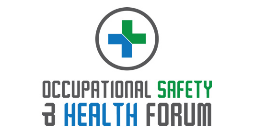The global environment health & safety market size is anticipated to reach USD 77.04 billion by 2030 to expand at a CAGR of 6.5% from 2023 to 2030.
That’s according to a new report by Grand View Research, which cites the increase in stringent government regulations across various economies act as a major driver for EHS market.
Moreover, energy and chemical sectors, where workers handle hazardous products, use environment health and safety (EHS) services and software to prevent workplace mishaps. These aforementioned factors will propel the demand for EHS in the coming years.
Key findings include:-
- The demand for environment health & safety (EHS) software product segment accounted for 3.6% of the global revenue share in 2022. The growth of environment health & safety (EHS) software segment can be primarily attributed to rising investments by organizations in automated environmental, health, and safety solutions to reduce the harmful impact of their operations on the environment and provide a safer working environment for employees.
- The demand for cloud deployment mode segment accounted for a 27.6% share of the global revenue in 2022. The vast range of capabilities and essential features that cloud-based solutions offer are causing the adoption of these solutions to increase at a significant rate and this trend is anticipated to continue throughout the projection period.
- The chemicals & petrochemicals end-use segment accounted for a 24.3% share of the global revenue in 2022. Rapid increase in the production of shale across the globe has led to an increased demand for petrochemicals and their derivatives. The chemical & petrochemical industry significantly releases contaminants in water bodies making them prone to emission norm violations. The effective use of environment health & safety (EHS) services and software can assist these industries in tracking and reporting their regulatory compliance and environmental impact.
- North America accounted for 37.7% of the global revenue share in 2022. The high demand for environment health & safety (EHS) services in North America can also be attributed to the presence of a large number of oil and gas extraction industries in the region, which use environment health & safety (EHS) services to adhere to the regulations and ensure the health & safety of their employee.
- In January 2021, AECOM formed a partnership with Conservation International and co-founded the Green-Gray Infrastructure Community of Practice (GGI COP). The GGI COP includes members from government, non-profit, private, and academic organizations in various sectors including engineering, conservation, construction, and finance.
Companies that have implemented a formal risk management system can identify the risks across all the operations. For instance, in November 2020, Intelex Technologies acquired ehsAI, a compliance automation technology provider that uses machine learning and artificial intelligence to help organizations reduce the risks and costs of permitting and compliance management. This acquisition has increased Intelex’s compliance offerings and has further strengthened its EHSQ position.
The development of Big Data and the Internet of Things (IoT) is anticipated to augment the use of environment health & safety (EHS) technology. In addition, digital transformations such as inexpensive computing power, development of cost-effective sensors that can collect large volumes of information, and overall connectedness of systems and devices are anticipated to augment the growth of environment health & safety (EHS) technology over the forecast period.
The reports says manufacturers of EHS solutions are looking for partnerships, mergers, and acquisitions to create cutting-edge and original solutions. Also, the manufacturers are implementing a number of methods, such as geographic growth and the development of new products, to increase their market penetration and serve end-use industries. For instance, AECOM and Conservation International collaborated to co-found the Green-Gray Infrastructure Community of Practice in January 2021. Members of the GGI COP come from academic, government, non-profit, and corporate organizations in a range of fields, including engineering, conservation, building, and finance.




